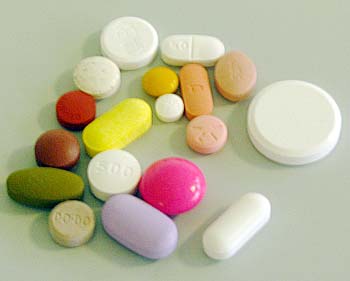What is a tablet?
Tablets are the most commonly prescribed dosage form for getting drugs into the body. This is because they are compact, thus easier to
 carry. They are easy to use for most people and cheap for manufacturers to produce. Tablets are traditionally circular or disk shaped, but can resemble any shape. Tablets which resemble a capsule are known as caplets and are designed to make swallowing easier for patients. A scored line is sometimes provided in the middle of a tablet to make them easier to break in half if half a dose is required.
carry. They are easy to use for most people and cheap for manufacturers to produce. Tablets are traditionally circular or disk shaped, but can resemble any shape. Tablets which resemble a capsule are known as caplets and are designed to make swallowing easier for patients. A scored line is sometimes provided in the middle of a tablet to make them easier to break in half if half a dose is required.
A common misconception is that tablets only consist of the drug. This is however not the case as commonly a tablet contains fillersto give the tablet size, binders to hold the tablet together, ingredients to make the tablet break down (disintegrants), colourings to make the tablet identifiable and very small amounts of materials to help the powders move around the tablet machine when they are being made (lubricants, glidants and anti-adherents). The figure below (Figure 2) provides an example side view of a tablet if the ingredients were different colours.
All of the different parts of a tablet are chosen to make sure that they do not interact with each other or more importantly affect the absorption of the drug itself in a negative way. This is why it is important to not crush more than one different tablet together as the ingredients of one tablet could affect the drug in another.
Figure 2 Diagrammatic representation of a cross section of a tablet’s contents. |


